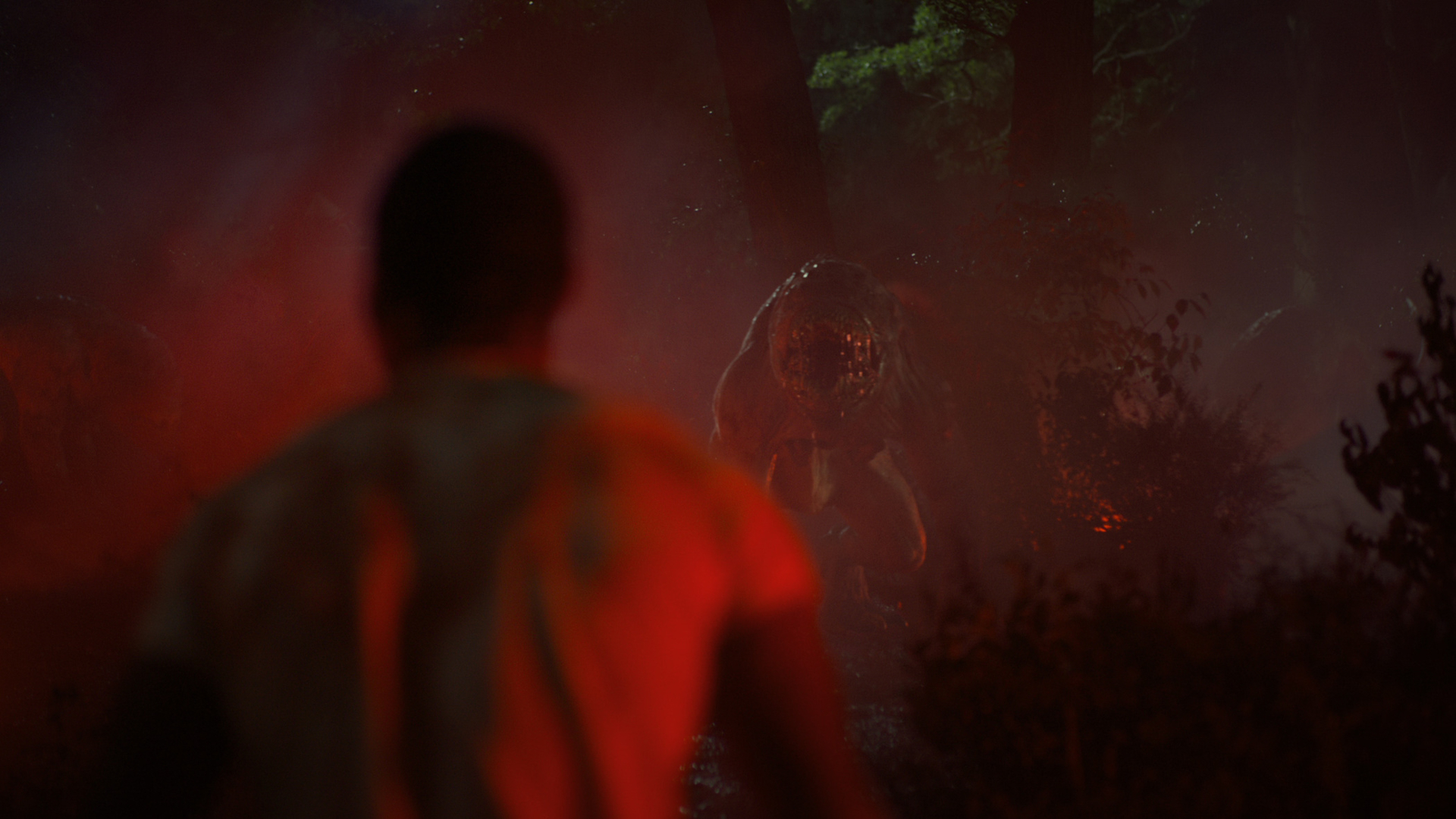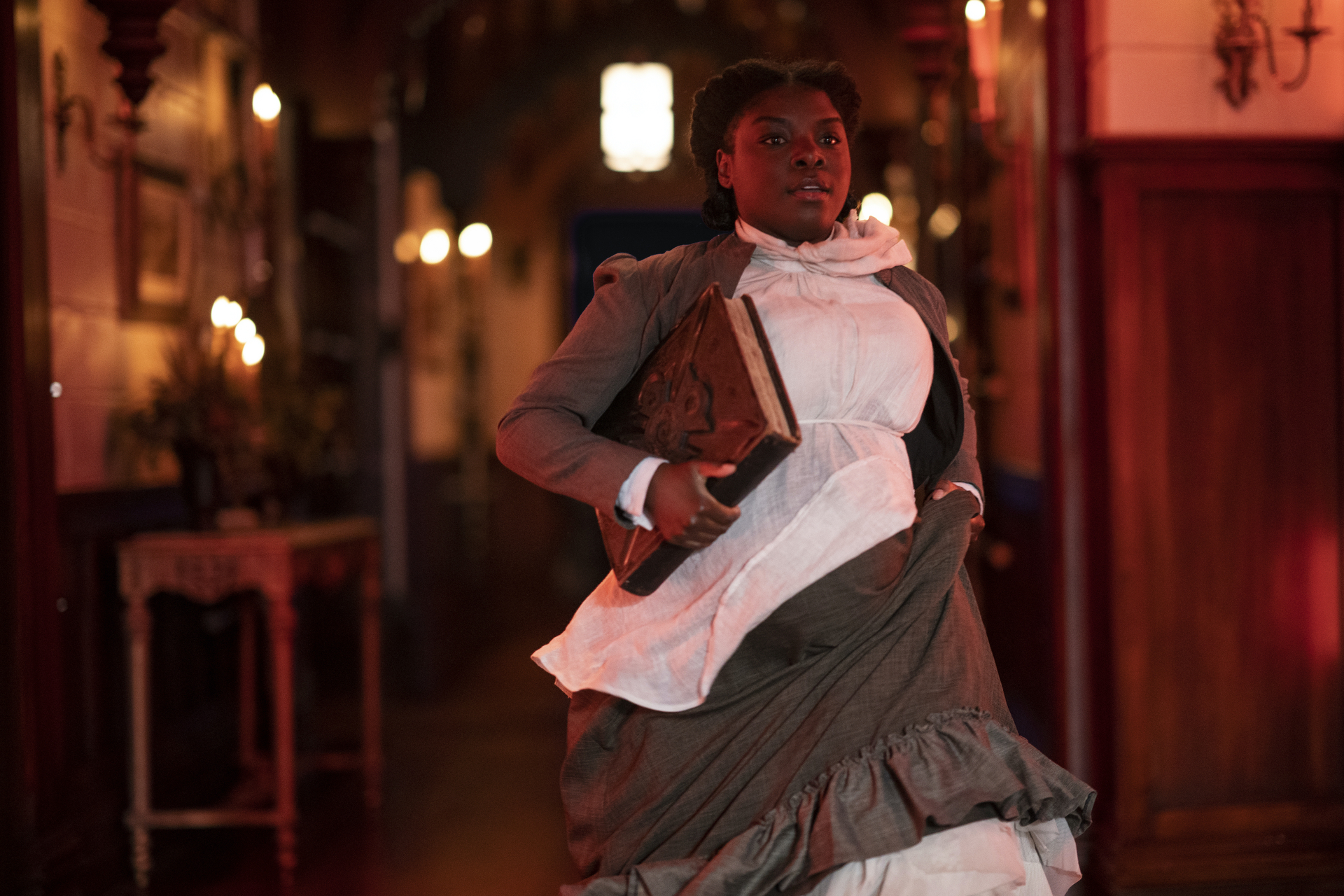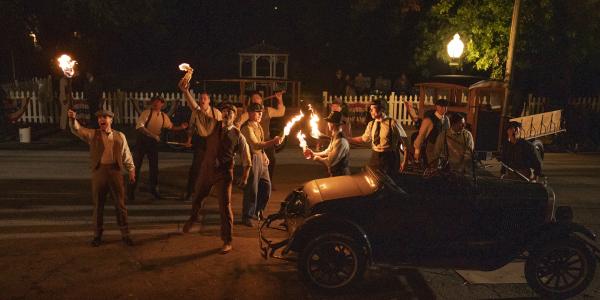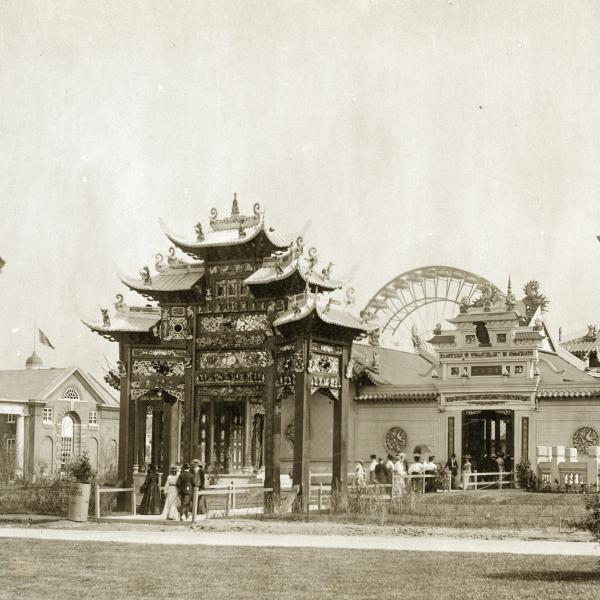A postdoctoral fellow in American literature in the Department of English, Michael J. Sanders currently teaches the course The Nightmare Canon: American Horror Stories.
We just might be in a horror story. History books are full of them. Sure, maybe not true stories of the vampire Lestat or the killer clown Pennywise. But who is to say that Jim and Jane Crow (with a sequel of their own) do not make for more terrifying villains?

Such is the premise of the HBO series Lovecraft Country, adapted from Matt Ruff’s 2016 novel by showrunner Misha Green and produced by Jordan Peele and others. The show centers on the Freeman family as they venture across 1950s America to “Lovecraft Country,” a metaphor for rural New England (if not the entire United States), where Atticus “Tic” Freeman (played by Jonathan Majors) and family friend Leticia “Leti” Lewis (Jurnee Smollett) hope to uncover why Tic’s father Montrose (Michael K. Williams) went missing. Along with Tic’s uncle George (Courtney B. Vance), aunt Hippolyta (Aunjanue Ellis), their daughter Dee (Jada Harris), and Leti’s sister Ruby (Wunmi Mosaku), the show explores how Black families fought through the historically all-too-real horrors of sundown towns, racially motivated killings, racially discriminatory housing practices, and much else. Through a complex web of visual and auditory allusions (here is a helpful guide), the show does a great job of echoing these horrors back and forward into the American past and present. Alongside its realism, the show’s episodes also portray terrors of American racism and sexism through the tropes of horror, fantasy, and science fiction — monsters, magic, time travel, and yes, love of comic books — to an effect that starts off Lovecraftian and often ends closer to Indiana Jones and Back to the Future.

In a poignant moment from episode 1, Tic and Leti are saved from a death at the hands of racist police by shoggoths, large Lovecraftian monsters ready to rip people in half. In “At the Mountains of Madness,” H.P. Lovecraft imagines an alien race of “Old Ones” who have seeded all human life on earth in an act of cosmic indifference. These Old Ones made a misstep, however, when they bred and managed shoggoths as their powerful sea-creaturely slaves. When Lovecraft’s shoggoths eventually stage a failed rebellion, it is hard to miss why the show adapts them to rise up and slay white would-be killers instead of Tic and Leti.
Lovecraft’s own racist worldview, blatant in many of his stories and excessive by even the standards of his day, was both an undeniable and an unforgiveable fact of his life. At the same time, because Lovecraftian horror so hauntingly portrays the human fear of the unknown, the author remains an uneasy influence on the genre, even on some of today’s horror writers of color. From Guillermo del Toro to Black horror writer Victor LaValle and others, love-and-kill-him Lovecraftian rewrites are a popular theme in the genre, as Lovecraft’s deep fear of a Black planet all too easily adds an interesting context to things like, well, Fear of a Black Planet.
Besides creatures like shoggoths and Cthulhu, perhaps H.P. Lovecraft’s most famous horror invention is that of the Necronomicon, an obscure book the profound contents of which are too unbearable to be read in full. In Lovecraft’s stories this book is written by “the mad Arab Abdul Alhazred,” a detail Ruff’s novel calls out for being both a racist depiction and a mistranslation meaning “servant of the-the Hazred.” In the HBO series, an all-white, all-male group of occult magicians have their own powerful book, the Book of Names, a magical key to political power and perhaps even eternal life. Christina Braithwhite (Abbey Lee), the daughter of this group’s leader, loathes the misogyny of her father's magicians and will commit any treachery in her quest to recover the entirety of the Book. However, because his mother’s ancestor Hanna was a slave who stole the Book of Names from Christina’s slave-owning ancestor Titus Braithwhite, Atticus realizes he can find crucial pages of the Book before Christina does. Much of the series’ and the novel’s adventures involve finding and translating this Book of Names as various characters battle to own and understand it.

In the novel, though, there is a different forbidden book, one less evident in the HBO series, a ledger kept by Montrose and George that tallies the full debt owed to their ancestor Adah for her work and torture as a slave. And in one of Ruff’s novel’s most startling turns, the Braithwhites end up paying their debt to Adah in full, with interest. And because Lovecraft Country (here the novel more often than the show) frequently rewards those who hold out for these kinds of happy endings, it also subtly rouses Americans to what has for too long remained an avoidable political reckoning. Lovecraft Country argues that, just like in a horror story, the time has finally come when strange occurrences can be avoided no longer.
Adah’s ledger is one of Lovecraft Country’s most powerful critiques of the persistent trauma of American racism. Though episode 3 of the series uses the haunted house story form to look at the horrors Leti faces in pioneering, the novel allows one to look more directly at a different House haunted by a different book of names, one it has refused to either open or compile for 30 years. Like Lovecraft’s characters with the Necronomicon, this other House's occupants only glimpse what they dare not read. On a few occasions America has read from its book of names to honor a debt, but now it dares not turn the page in order to repay the quiet plunder. And so, Lovecraft Country subtly argues, something like a haunting descends upon America. This haunting, Ruby opines in the series, keeps Blackness divorced from the magical currency of whiteness. A real currency, a real magic.
Like in most horror stories, there is still hope. Recently, one state has stepped forward in an attempt to begin compiling the torn pages of its book of names. But in a horror story, ending the haunting, clearing the House, is tricky. “It’s not as simple as just saying the words,” Leticia says. On many occasions in Lovecraft Country, just like in other countries, it takes multiple generations of people all working together to lift the curse. And it often takes more than one try. What will we do? Will we try? Or will we keep running, running because it is always out there and only now are we beginning to understand just why it is that people in horror stories do anything, anything, go up the stairs, hide in the basement, anything to not have to face it?
“The past is a living thing,” a character in the series remarks. And it’s coming for us.
Headline image: Photograph by Eli Joshua Ade/HBO





